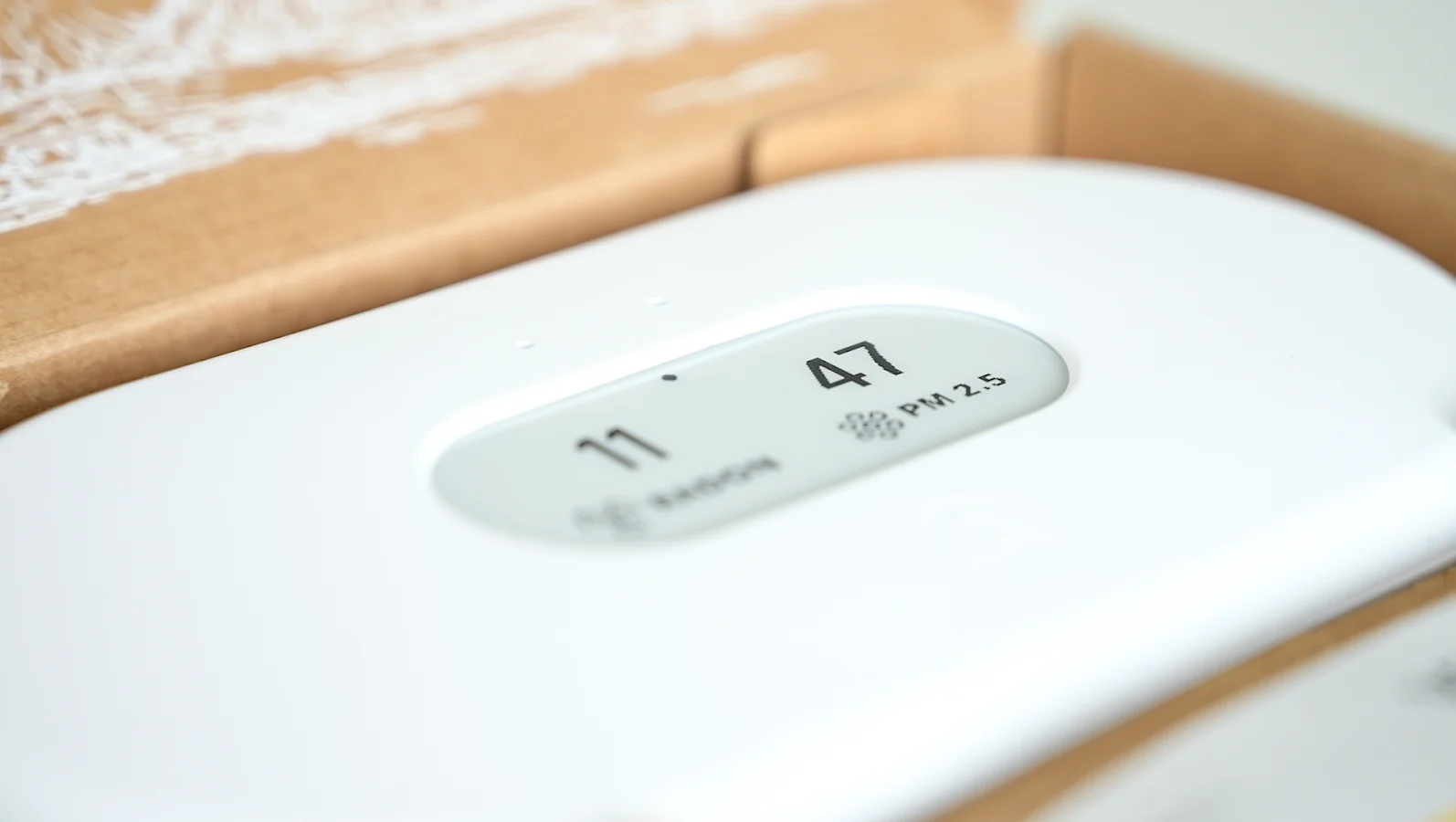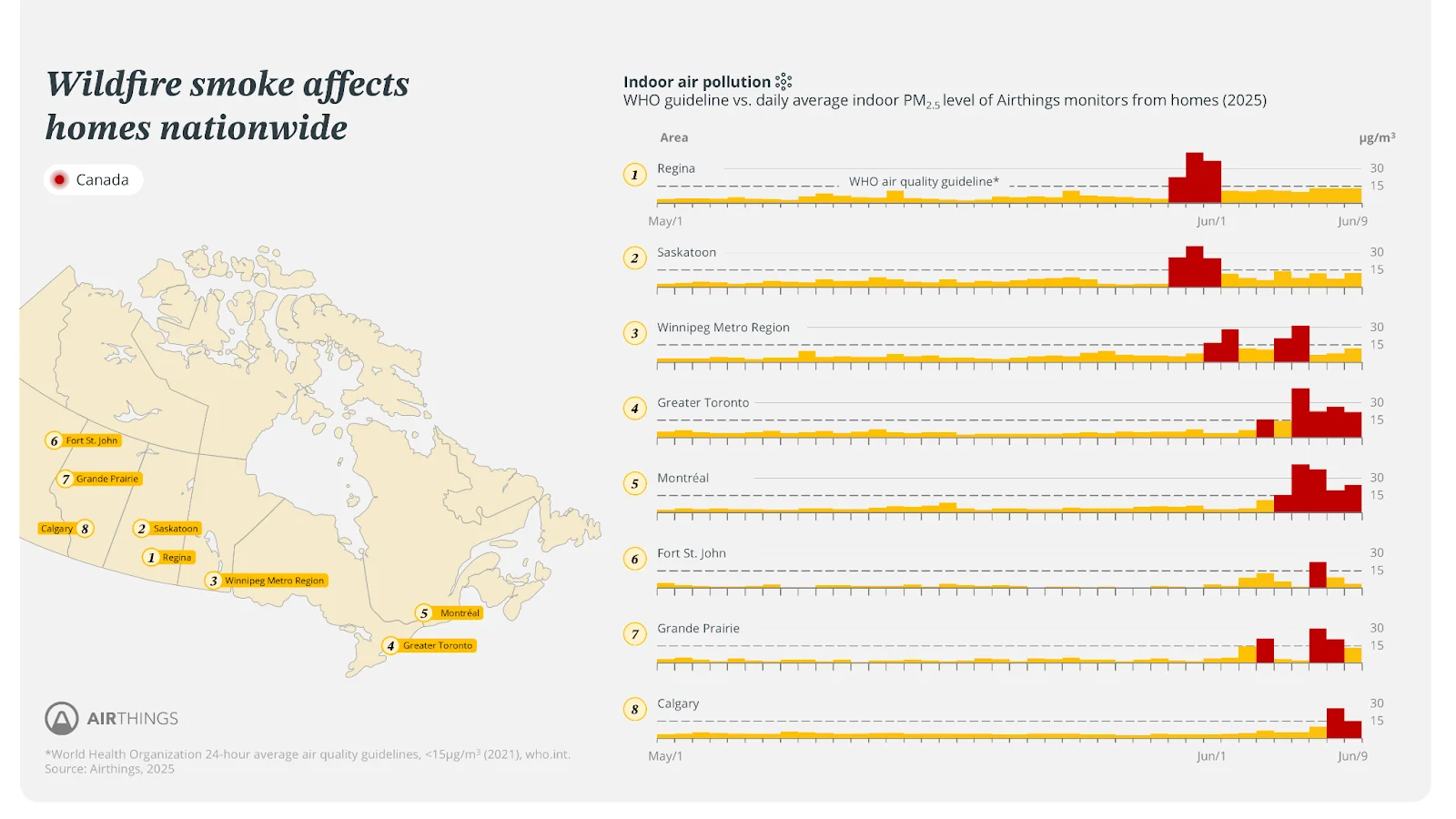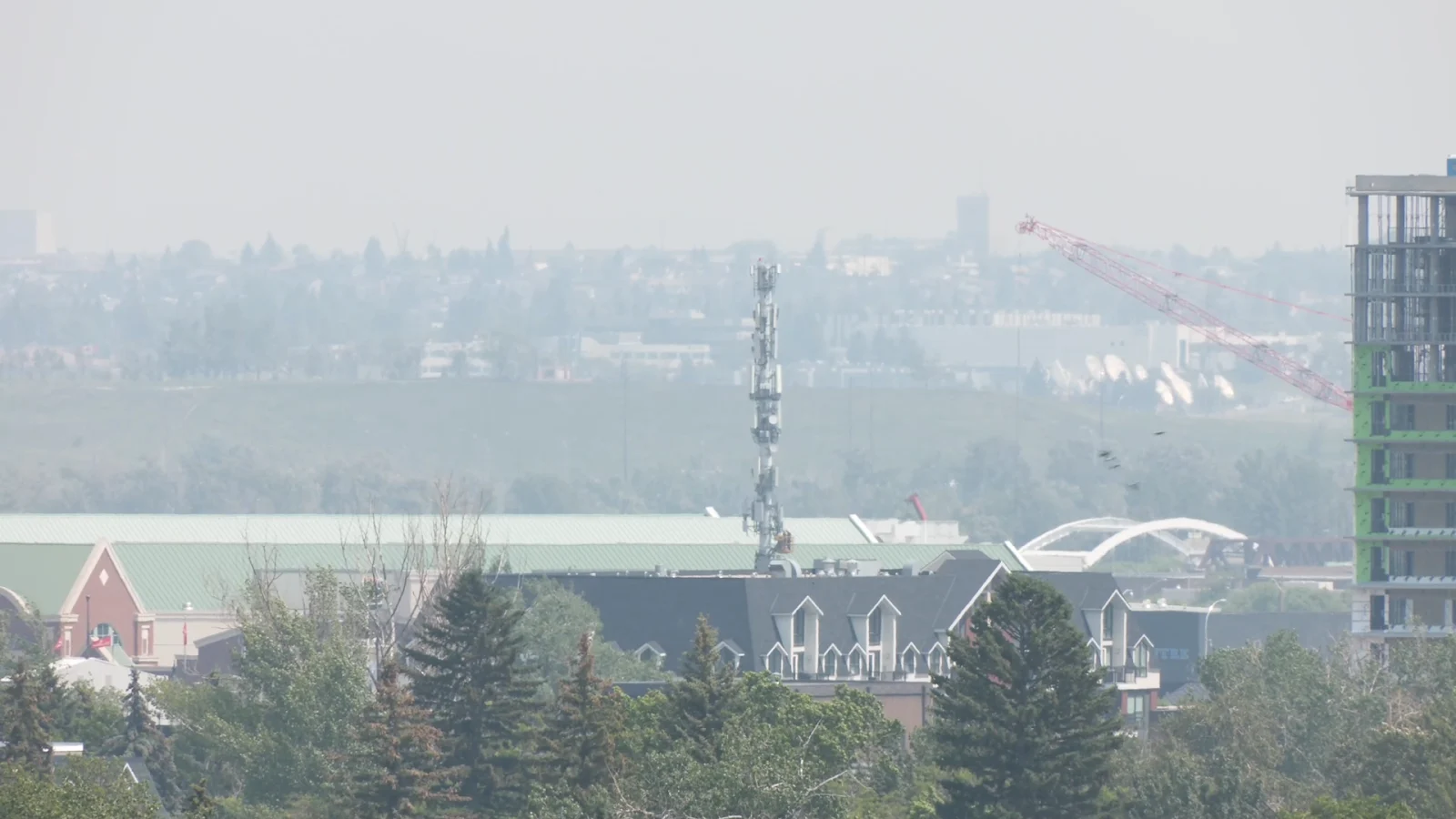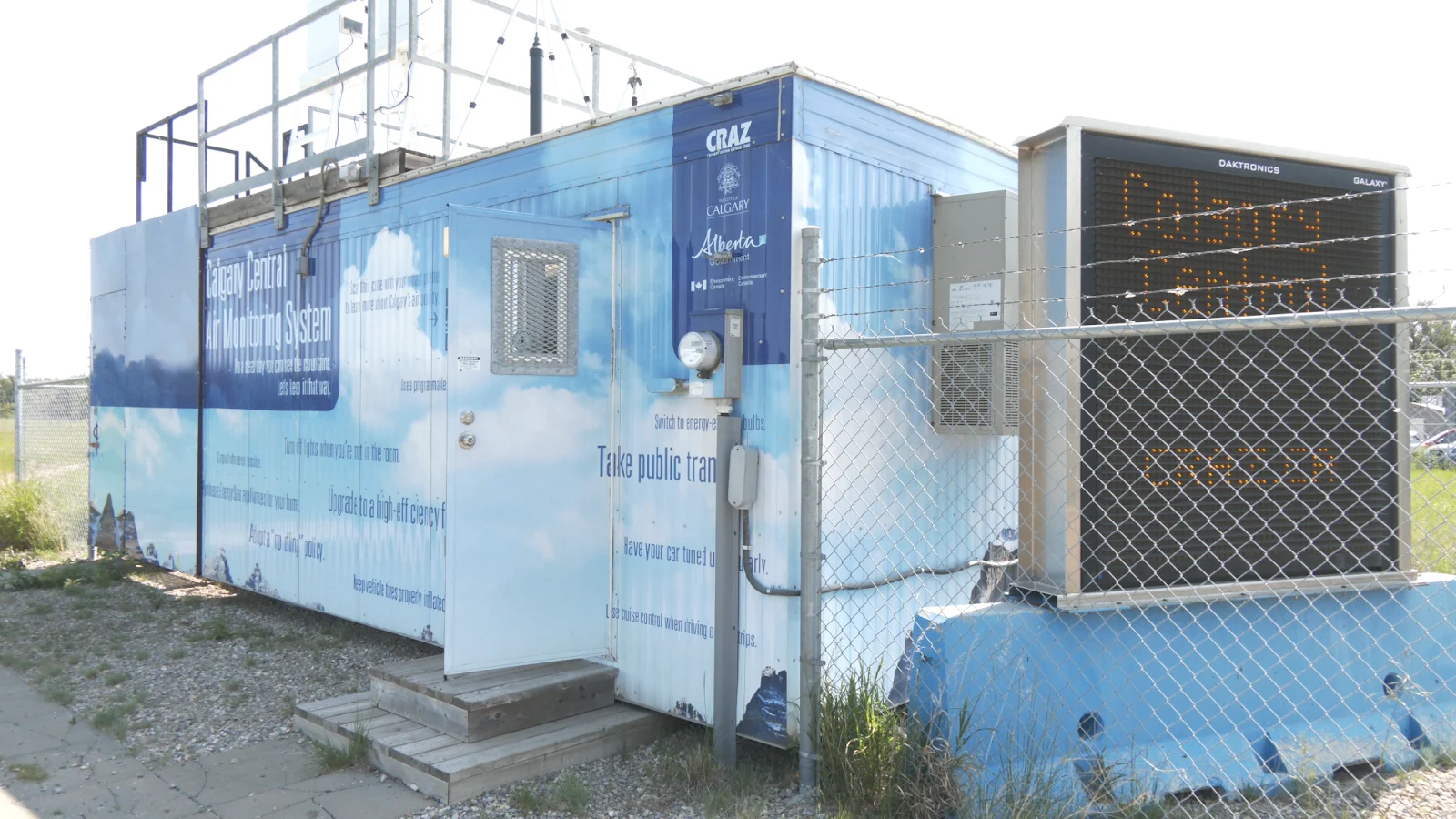
Indoor PM2.5 spiked above safe levels during June wildfire smoke, report shows
PM2.5 levels in homes across Canada surged past WHO guidelines during June's wildfire smoke, data shows.
A company that sells internet-connected home air quality monitors says its data shows PM2.5 levels soared to unsafe levels in homes across Canada in early June.
According to a recent report from Airthings, as Canadian wildfire activity increased over the first week and a half of June, indoor 24-hour average PM2.5 levels rose above World Health Organization (WHO) guidelines in homes across major cities nationwide.
“News was coming out about how smoke was impacting areas really far from where the origin of fire was, so we thought we’d look at this data we have access to through our smart monitors for PM2.5 levels,” said Airthings Senior Product Marketing Manager Erica Karlsen.
RELATED: The Weather Network's new Fire & Smoke map helps you plan ahead and stay safe
“We wanted to find out if this was reflected in the indoor PM levels, and we found that the correlation was really quite clear.”

Courtesy: Airthings | Data from Airthings’ smart monitors showed 24 hour average PM2.5 levels exceeding WHO guidelines in homes across Canada in June, in some cases for three or four days in a row.
PM2.5, also known as fine particulate matter, refers to particles suspended in the air that are less than 2.5 micrometres (μm) in diameter.
Formed as different types of wildfire fuel combust and release into a smoke plume, PM2.5 is the primary risk from wildfire smoke as the particles are small enough to be absorbed into the lungs and bloodstream when inhaled.
Short-term exposure to high levels of PM2.5, according to the B.C. Centre for Disease Control, has been linked to the exacerbation of conditions such as obstructive lung disease, bronchitis and pneumonia, as well as cardiovascular issues.
Concerns are also growing about the long-term effects of exposure, which include an increased risk of neurological conditions like stroke and dementia.
CHECK OUT: Combat wildfire smoke: Building your own indoor air filter for cleaner breathing
While the Government of Canada claims that there is no known safe level of exposure to pollutants such as PM2.5, WHO has set target thresholds for short-term indoor exposures.
The organization recommends not exceeding a 24-hour average of 15 µg/m³ more than three or four days per year, as "exceedance of the air quality guideline (AQG) levels is associated with important risks to public health."
According to Airthings, their monitors in some cities detected PM2.5 levels that exceeded the guidelines for three or four consecutive days.
“If you look at our data, you see that most of the time the PM2.5 levels are well within the WHO guidelines, but when the smoke enters the area there’s a period of a few days where it’s going in excess of that level, even indoors,” Karlsen said.
“That’s what our monitors do, they really empower you by giving you information. You don’t have to guess about your air quality, you have real information which you can use to make decisions.”

Wildfire smoke obscures the Calgary skyline on June 10, 2025. (The Weather Network/Connor O’Donovan)
So, should you invest in your own home monitor?
If you are concerned about air quality, experts say these devices can help you stay informed and ensure that mitigation measures, such as portable purifiers and HVAC system filters, are effective.
Consumer-level air quality monitors have entered the market in recent years as laser counter technology, which measures particulate matter, has become more affordable. In addition to Airthings' services, PurpleAir sells monitors designed for indoor home use.
MUST SEE: Canada's first cider appellation opens, inspired by weather proverb
These monitors are used by the Calgary Region Airshed Zone (CRAZ) program, which is a partnership among various levels of government and Environment and Climate Change Canada.
CRAZ operates several professional air quality stations throughout Calgary that provide authorities with data on a variety of pollutants.
While these stations use cutting-edge, expensive pollutant sensing technology, the program also employs some PurpleAir monitors to broaden its reach.

The Calgary Region Airshed Zone program operates a number of cutting edge air quality monitoring stations that track everything from particulate matter to fossil fuel emissions like nitrous dioxide. (The Weather Network/Connor O’Donovan)
“Currently what we’re seeing is that PM2.5 is the only monitoring technology that, at this time, is getting closer to our technology when it comes to the low-cost sensors,” said CRAZ Program Director Mandeep Dhaliwal.
“They are fairly accurate and precise.”

Airthings’ smart home monitors and Renew purifiers were used to track changes in indoor PM2.5 levels. (The Weather Network/Connor O’Donovan)
DON'T MISS: Could a cow really get swept up by a tornado?
Copy edited by Fredrick Reyes, a digital journalist at The Weather Network.
